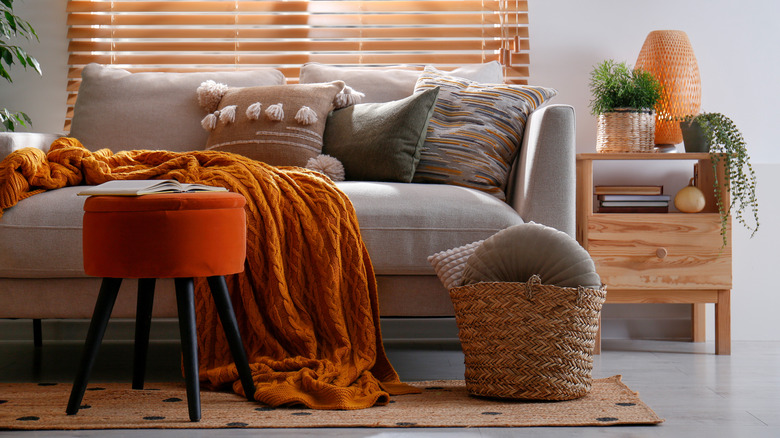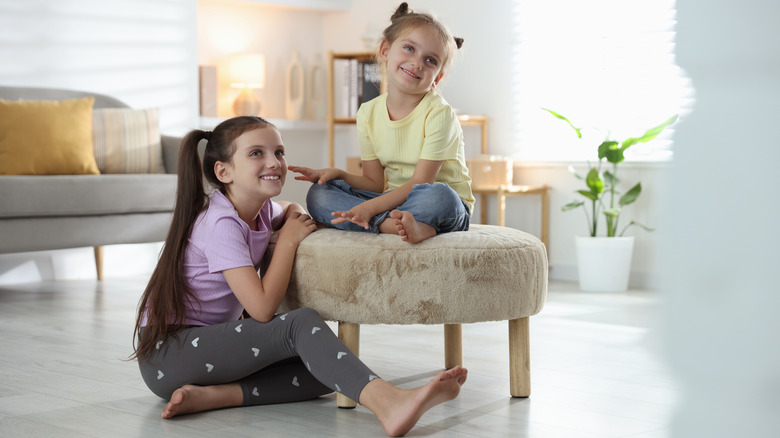Why This Modest Furniture Piece Is Dominating Design Trends
If you're a fan of television shows and magazine articles about interior decorating trends, you may have noticed a common theme recently. Stools are dominating design trends because adding these modest furniture pieces to a room delivers a fashionable element that's also practical – without occupying too much room. Learning how to decorate with stools in your home is easier when you understand all the benefits they provide for both fun and function. That's why we reached out for an interview with an expert, Laura Koshel, interior designer and owner of LK Design, to help you come up with ideas for making use of stools in your home's décor.
When you want to make a statement with your décor, adding a stool can provide impressive architectural elements through its size and shape because so many design options are available. You can also introduce interesting colors and patterns with the fabric or material used in the seat. "Footstools offer a fun opportunity to introduce an unexpected design element into a space," Koshel says in an exclusive interview with House Digest. "Whether through color, texture, or shape, they can add a playful or eclectic touch without overwhelming the room." This is due to their small sizes. Beyond offering an interesting visual piece in a room, adding a stool to the design will provide other benefits. They can give you extra seating, display spaces, or storage, which makes them functional as well as decorative.
It's easy to overlook stools because of their size, but they offer excellent functionality
When you want to have a little extra seating or a place to rest your feet while sitting in a room, Koshel says using stools is a great choice. "Footstools are an often overlooked but highly functional element in interior design," she says in an exclusive interview with House Digest. Adding a footstool with a contrasting material or color to the rest of the furniture can yield a visually striking element.
If you're trying to decide whether an ottoman or footstool is right for your space, Koshel likes the lower height of the footstool in providing a more comfortable option for resting your feet, making it more functional. "Their height plays a crucial role in ergonomics," Koshel says about footstools. "Unlike ottomans, which can be quite high (some reaching up to 20 inches), footstools are typically lower, allowing for a more natural and comfortable leg position. With a properly sized footstool, your knees remain slightly bent rather than fully extended, which supports better posture and reduces strain." When you factor in the versatility that footstools offer and the ability to introduce different colors, fabrics, and materials into the room, the level of comfort you receive is a nice bonus feature.
Footstools are small enough to move wherever you want, making them a versatile selection
Koshel appreciates the ability to use the footstool in a variety of locations throughout the house. "Lightweight and easy to move, footstools are also practical," Koshel says in an exclusive interview with House Digest. "They can be repositioned effortlessly, making them versatile additions to both formal and casual settings." They are especially useful in apartments or small spaces in a house because they don't occupy a lot of space.
You don't need a stool in every room, which would require more space. Instead, you could move one stool wherever you want to use it for a current activity. It's practical enough to serve as a foot rest while you're reading a book or watching TV, but you also could move it into the media room for extra seating for a movie. Move it completely out of the room when the kids need more space to play, and it can likely fit in nicely with the other rooms' décor because of its versatility. If you have a hollow footstool, you could use it to store extra blankets. Larger footstools even work as a coffee table, enhancing their usefulness. Have a footstool available in your home, and you can let your imagination run wild with how to take advantage of it.


